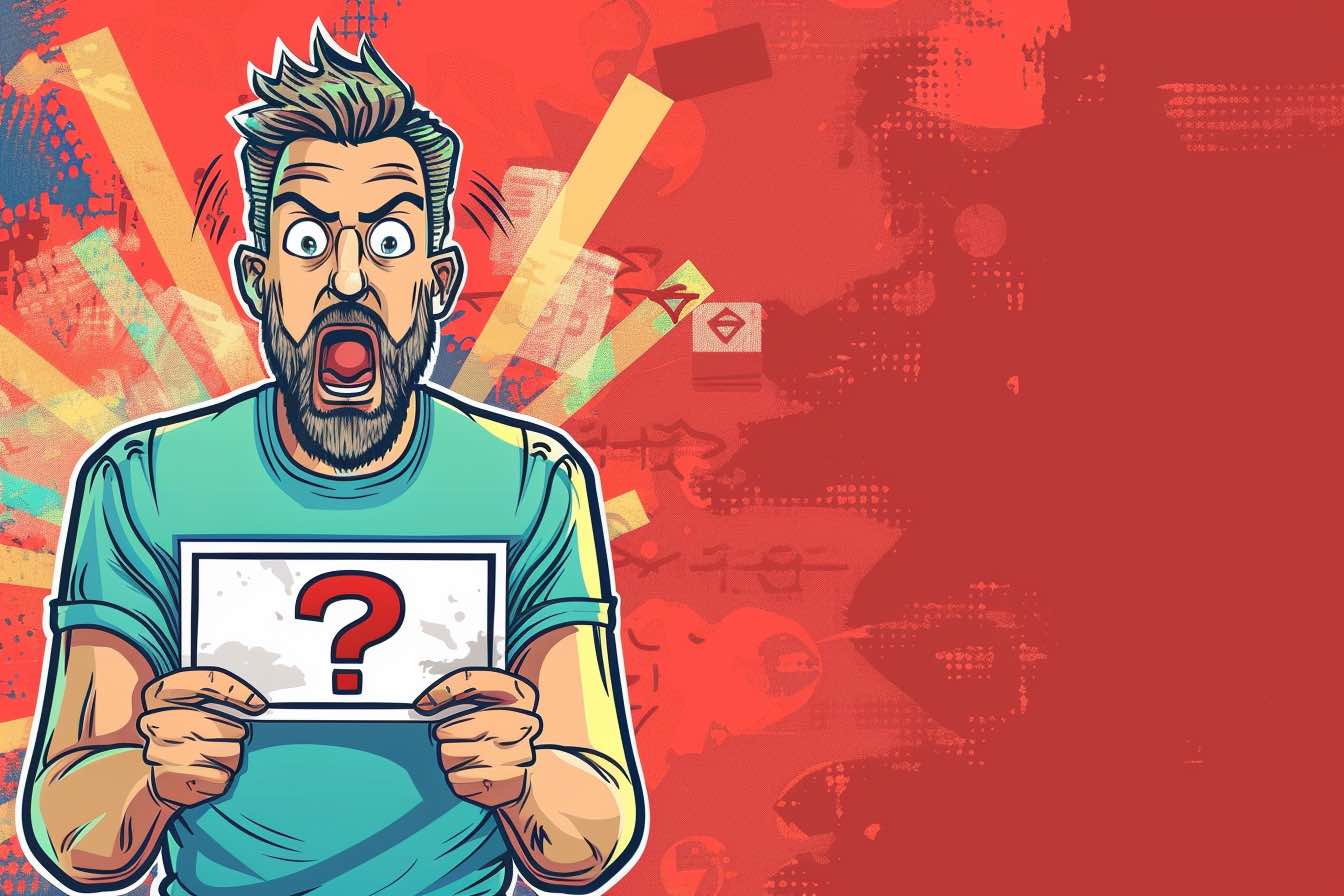Cristal Fernandez says someone drained $2,730 from her Chase bank account, wiping out her entire savings. Worse, the bank won’t help her recover the money, which the scammers siphoned off through Zelle and several other cash apps. In fact, she was the victim of a cash flip scam.
If this isn’t the kind of case a consumer advocate should help with, then I don’t know what is.
But the truth about Fernandez’ account is far worse than what she claims. And before I continue, a warning: There are enough twists, turns and lies in this story to fill the first chapter of a spy novel. And there’s a very unusual ending, at least as far as my advocacy team and I are concerned. It involves a horrible rip-off called a cash flip scam, which I’ll get to in a minute.
Along the way, we’ll answer a few essential questions:
- What is a cash flip scam?
- How can you identify a cash flip scam?
- How do you get your money back from a cash flip scam?
Her story comes at an interesting time. Just a few weeks ago, Zelle’s member banks quietly began to reverse transactions for some customers scammed by impostors. Would Fernandez qualify as one of the victims, and possibly get her $2,730 back? (Stay with me until the end because I will ask for your opinion on this contentious case.)
Here’s how she lost $2,730
Fernandez’ plea for help was a little short on details.
“Money was sent through various transactions of a cash app and Zelle to three different people who I don’t know,” she told me. “Chase has refused to help and told me the money was authorized.”
Fernandez says Chase advised that she could file a police report or complain to the Consumer Financial Protection Bureau. She says she has already done both.
“I was at work when all of this happened, and I got home, and my account was wiped,” she adds. “I lost $2,730 in total. Chris, I worked hard for that money just so someone could come and take it away!”
Of course, my first question to her was: Can you show me the correspondence between you and Chase? (You know, the ol’ Elliott Method.)
No, said Fernandez.
“I don’t have emails. All the interactions have been through the app,” she says. “I have letters and screenshots from everything. I have been dealing with this since Saturday. All I want is my money back!”
So far, nothing out of the ordinary. Fernandez needed to get a paper trail going, and she needed to be patient. But she was not telling the whole story. (Related: Chase said her identity had been stolen, but it was a Zelle callback scam.)
Digging for the truth
There were a few things about her account that didn’t make sense. Fernandez claimed that someone accessed her account while she was at work. (Related: Hey Chase Sapphire Reserve, where’s my $15,194?)
Me: Have you ever shared your password with someone else?
Fernandez: No, but my phone has recently alerted me to change my password on certain sites like Chase, Amazon and Boost (my phone company) because it seems that my password might be compromised.
Hmm. Maybe the bank exposed her password in a data breach. I had more questions.
Me: Does your banking app have two-factor authentication that requires you to sign in with a fingerprint or verify your login with a text message from your phone?
Fernandez: Yes, but I have my passwords saved to my phone. It has Face ID recognition, but I stopped using it months ago.
Wait, she’s claiming that she saved her passwords to her phone without a password or biometric login? That’s just asking for trouble.
Me: Cristal, I’m not sure what to do with your case. The bank will tell me that you could have accessed the phone at work or authorized someone to do it at that time. Is there any way to prove beyond a doubt that it wasn’t you?
How long did it take for you to discover the transactions and report them?
And that’s when Fernandez decided to tell me the truth.
“I’m going to be honest”
I was shocked to get Fernandez’s response.
“Look, I’m going to be honest,” she told me. “I was persuaded by someone with a high following on Instagram to send him a total of $2,730. I was scammed. This person never gave me what was promised and then proceeded to block me.”
OK, that’s a very different story. Fernandez says she told the bank that she didn’t make these transactions because she felt that since the transactions went to a scammer, they were not “authorized” — even though she made them.
“I have the screenshots of the money sent, I made a police report about this person, I have the person’s phone number and I have their social media accounts,” she added. “I know not much can be done because it was authorized. But it was basically fraud. This person did it with the intent to rob me.”
I know people have lied to me in my years of advocating for consumers, but I can’t recall anyone admitting to it. So I was at a loss for words.
“I apologize for not being honest from the beginning,” she continued. “But I don’t know what to do anymore. The bank does not want to help at all.”
So how did she get scammed? Fernandez says she saw a pitch from an online influencer, whom she declined to identify. The scammer promised to double her money after she sent it to him. But as soon as she sent the money, the scammer blocked her and stopped responding.
“If I got scammed, imagine how many other people are,” she added. “And he is not getting stopped from doing so. Even the banks won’t do anything about it. He is basically stealing people’s money.”
There’s a term for this. It’s a cash flip.
What is a cash flip scam?
A “cash flip” or “investment flip” scam is a fraudulent scheme where criminals promise victims that they can double their money quickly through an “investment” opportunity.
The scam typically involves someone pretending to be a financial expert on social media platforms. The scammer offers you a rare chance to invest your money with the promise of receiving a too-good-to-be-true return — like turning $2,730 into $5,460.
What are the signs that you’re dealing with a cash flip scam?
A cash flip is usually easy to spot. Here are the signs:
An unsolicited offer
Scammers often will reach out to you with an unsolicited message by email or on social media. That could be a sign that you’re dealing with a cash flip scam. Real investment professionals don’t send messages with “once-in-a-lifetime” investment opportunities.
A guaranteed return on your investment
Cash flippers usually promise guaranteed returns on investments. They say your money will quickly multiply without any risk. Legitimate investments always carry some level of risk and do not offer guaranteed returns. If it sounds too good to be true, it probably is.
Act now!
Cash flip scammers often frame their “investment” opportunity as a limited-time offer. That way, you don’t have time to think about it and read the fine print. If someone is telling you to act now before it’s too late, you might be dealing with a cash flipper.
Pay using a cash app
Cash flippers often ask you to send money through a cash app or to wire money. The reason? Cash apps almost never reverse the payment, and scammers can continue to use them even after people complain. Never, ever send money to someone you don’t know through a cash app or Zelle.
Bottom line: To avoid a cash flip scam, always do thorough research, consult with a licensed financial professional, and above all, be skeptical before making any investment. And that’s particularly true of an unsolicited offer you get on Facebook or Instagram.
But should I help Fernandez with her cash flip scam?
Who else did she lie to about the cash flip scam?
As I reviewed the correspondence between Fernandez and me, I wondered which version of events she’d shared with her bank. Did she maintain that someone accessed her account while she was at work, or did she admit to making the transfers herself?
Why you should never lie to your bank
Lying to a bank can get you into serious trouble. Here are just a few of the risks of lying to your bank:
- Financial consequences. If your bank discovers that you gave it false information, it could close your accounts, deny loan applications, or take legal action to recover any losses.
- Damage to your credit score. Lying to a bank can negatively affect your credit score. If your dishonesty is related to a credit application or financial transaction, your bank could deny you a loan. A damaged credit score can affect your ability to secure favorable terms on future loans and financial products.
- Legal trouble. Providing false information to a bank can have devastating legal consequences. For example, lying on official documents, such as loan applications or financial statements, is fraud and punishable by law. You could go to jail for that.
- Loss of trust. Even if your credit score is unaffected and there are no financial or legal consequences, there is the important question of trust. Trust is at the heart of any banking relationship. If a bank discovers that you lied, it takes a wrecking ball to whatever trust they have in you as a customer. You may need to look for a new bank.
And never mind the fact that she lied to a consumer advocate. I mean, we are on your side, for goodness” sake! I began to suspect Fernandez might be telling me a different version so that I would pressure Chase it into reversing the transaction. But I would be advocating for her based on a false premise.
Still, could she get her money back?
How to get your money back when you’re a victim of a cash flip scam
Recovering money lost in a scam is not easy. If you’re the victim of a scam, here’s a checklist:
1. Contact law enforcement
You can file a report with local law enforcement, providing details about the scam. Include all evidence such as screenshots, transaction records, and communication with the scammer. (Fernandez says she did this.)
2. Report the scam to the Consumer Financial Protection Bureau (CFPB)
The CFPB can hold your bank accountable if it is not following applicable laws regarding unauthorized bank transfers under Regulation E. Here’s how to report a scam to the CFPB.
3. File a complaint with the cash app
Report the scam to the platforms used for the transactions, such as Zelle. These platforms may have fraud departments that can investigate and take appropriate action. Request a chargeback if you made the transactions with a credit card.
4. Contact your bank
Reach out to the banks associated with the transactions (in this case, Chase). Explain the situation and provide evidence of the scam. Chase has its own resolution process, which may help you recover your money.
Unfortunately, scammers are smart, and they’ve figured out ways of keeping your money despite all of these safeguards. That was true for Fernandez, who had already contacted her bank, law enforcement and the CFPB. Would she ever get her money back?
Here’s what I decided to do with this cash flip scam case
I had serious misgivings about helping Fernandez after she misrepresented the facts in her case.
But setting all that aside, I saw even more red flags flapping in hurricane-force winds. Fernandez had declined to name the social media influencer who had allegedly scammed her.
Sometimes, people refuse to name a scammer when they think the scammer might tell a different story — a version that reveals the victim as the villain.
I was also troubled about the creative definition of “authorized.” She pushed the buttons on those transactions, so there was nothing unauthorized about them. I wondered what other definitions might have been reimagined in this case.
Even if I believed her and could look past these red flags, I still don’t think this case would have been resolvable. The bottom line is that she sent money to someone through a system that has no formal mechanism for a dispute. I don’t think I could get her money back even if I wanted to.
I declined to take the case. But I’m writing about it as a warning to anyone who might see a cash flip scam — or who is tempted to lie to a bank or a consumer advocate afterward. It’s just not worth it.
About this story
I get regular emails from readers asking if we ever lose cases. Yes, and this is one of them. I don’t like saying “no” to anyone, but I just don’t see a way we could have gotten Fernandez her money back. I researched, wrote and fact-checked this story. Aren Elliott produced the video. Andy Smith and his team edited the article and Dustin Elliott created the art.




